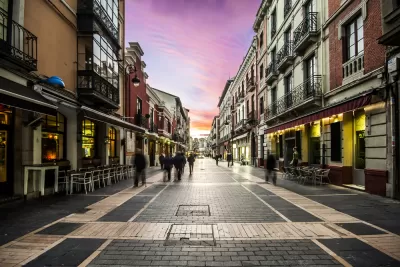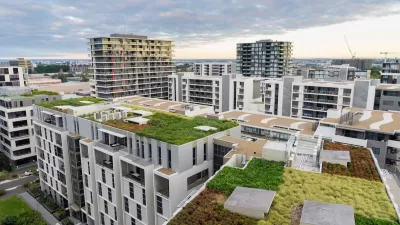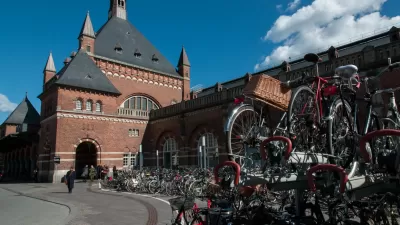Density and diversity—where boundaries between spaces and uses are lessened—create more vibrant, livable places and more functional cities.

In the new book Soft City, David Sim, creative director at Gehl, looks at how cities can foster relationships between physical spaces and the people in them. One way to achieve this, says Sim, is developing "layered" buildings where a variety of uses happen in close proximity, the boundaries are minimal, and the spaces encourage vibrancy and interactions.
"Good cities, from Sim’s perspective, are ones that make these connections possible. They can look different and exist in different contexts, but they share an overarching and essential quality, which Sim calls 'softness'—a stark contrast to the rhetoric of 'grind' and 'harshness' that’s often applied to urban life," writes Eillie Anzilotti.
Sim points out that design strategies for softness are varied and, in general, are not costly or dependent on technology. Wider sidewalks, courtyards, and street-level retail are all ways to activate and connect streets and buildings, notes Anzilotti. "And creating multiple entrances into a building, Sim says, perforates the boundary between the streetscape and what happens inside buildings so the lived experience of a person becomes one in which the whole city feels more accessible and connected, and much softer."
FULL STORY: Do you live in a ‘soft city’? Here’s why you probably want to

Planetizen Federal Action Tracker
A weekly monitor of how Trump’s orders and actions are impacting planners and planning in America.

Congressman Proposes Bill to Rename DC Metro “Trump Train”
The Make Autorail Great Again Act would withhold federal funding to the system until the Washington Metropolitan Area Transit Authority (WMATA), rebrands as the Washington Metropolitan Authority for Greater Access (WMAGA).

The Simple Legislative Tool Transforming Vacant Downtowns
In California, Michigan and Georgia, an easy win is bringing dollars — and delight — back to city centers.

The States Losing Rural Delivery Rooms at an Alarming Pace
In some states, as few as 9% of rural hospitals still deliver babies. As a result, rising pre-term births, no adequate pre-term care and "harrowing" close calls are a growing reality.

The Small South Asian Republic Going all in on EVs
Thanks to one simple policy change less than five years ago, 65% of new cars in this Himalayan country are now electric.

DC Backpedals on Bike Lane Protection, Swaps Barriers for Paint
Citing aesthetic concerns, the city is removing the concrete barriers and flexposts that once separated Arizona Avenue cyclists from motor vehicles.
Urban Design for Planners 1: Software Tools
This six-course series explores essential urban design concepts using open source software and equips planners with the tools they need to participate fully in the urban design process.
Planning for Universal Design
Learn the tools for implementing Universal Design in planning regulations.
Smith Gee Studio
City of Charlotte
City of Camden Redevelopment Agency
City of Astoria
Transportation Research & Education Center (TREC) at Portland State University
US High Speed Rail Association
City of Camden Redevelopment Agency
Municipality of Princeton (NJ)




























